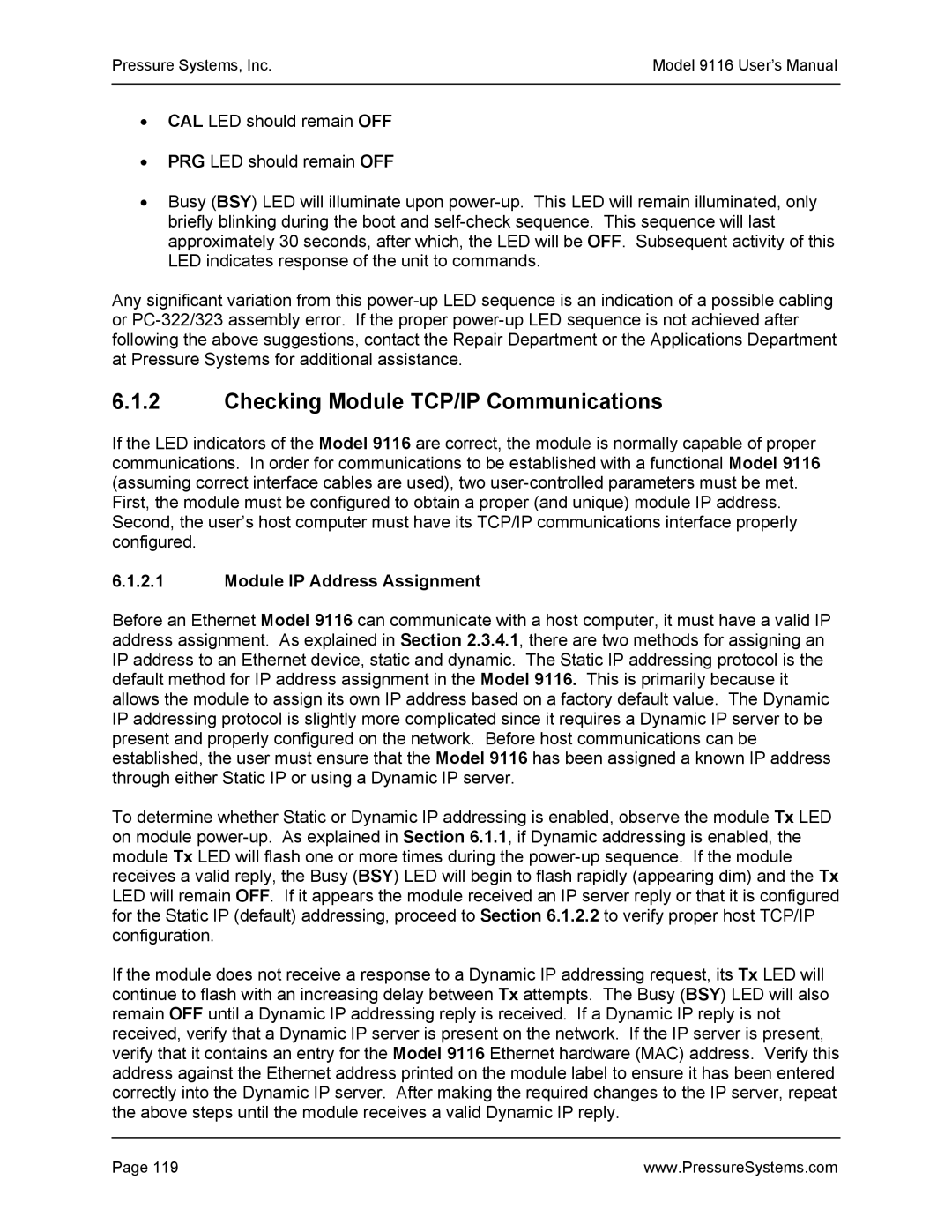Pressure Systems, Inc. | Model 9116 User’s Manual |
|
|
•CAL LED should remain OFF
•PRG LED should remain OFF
•Busy (BSY) LED will illuminate upon
Any significant variation from this
6.1.2Checking Module TCP/IP Communications
If the LED indicators of the Model 9116 are correct, the module is normally capable of proper communications. In order for communications to be established with a functional Model 9116 (assuming correct interface cables are used), two
First, the module must be configured to obtain a proper (and unique) module IP address. Second, the user’s host computer must have its TCP/IP communications interface properly configured.
6.1.2.1Module IP Address Assignment
Before an Ethernet Model 9116 can communicate with a host computer, it must have a valid IP address assignment. As explained in Section 2.3.4.1, there are two methods for assigning an IP address to an Ethernet device, static and dynamic. The Static IP addressing protocol is the default method for IP address assignment in the Model 9116. This is primarily because it allows the module to assign its own IP address based on a factory default value. The Dynamic IP addressing protocol is slightly more complicated since it requires a Dynamic IP server to be present and properly configured on the network. Before host communications can be established, the user must ensure that the Model 9116 has been assigned a known IP address through either Static IP or using a Dynamic IP server.
To determine whether Static or Dynamic IP addressing is enabled, observe the module Tx LED on module
If the module does not receive a response to a Dynamic IP addressing request, its Tx LED will continue to flash with an increasing delay between Tx attempts. The Busy (BSY) LED will also remain OFF until a Dynamic IP addressing reply is received. If a Dynamic IP reply is not received, verify that a Dynamic IP server is present on the network. If the IP server is present, verify that it contains an entry for the Model 9116 Ethernet hardware (MAC) address. Verify this address against the Ethernet address printed on the module label to ensure it has been entered correctly into the Dynamic IP server. After making the required changes to the IP server, repeat the above steps until the module receives a valid Dynamic IP reply.
Page 119 | www.PressureSystems.com |
